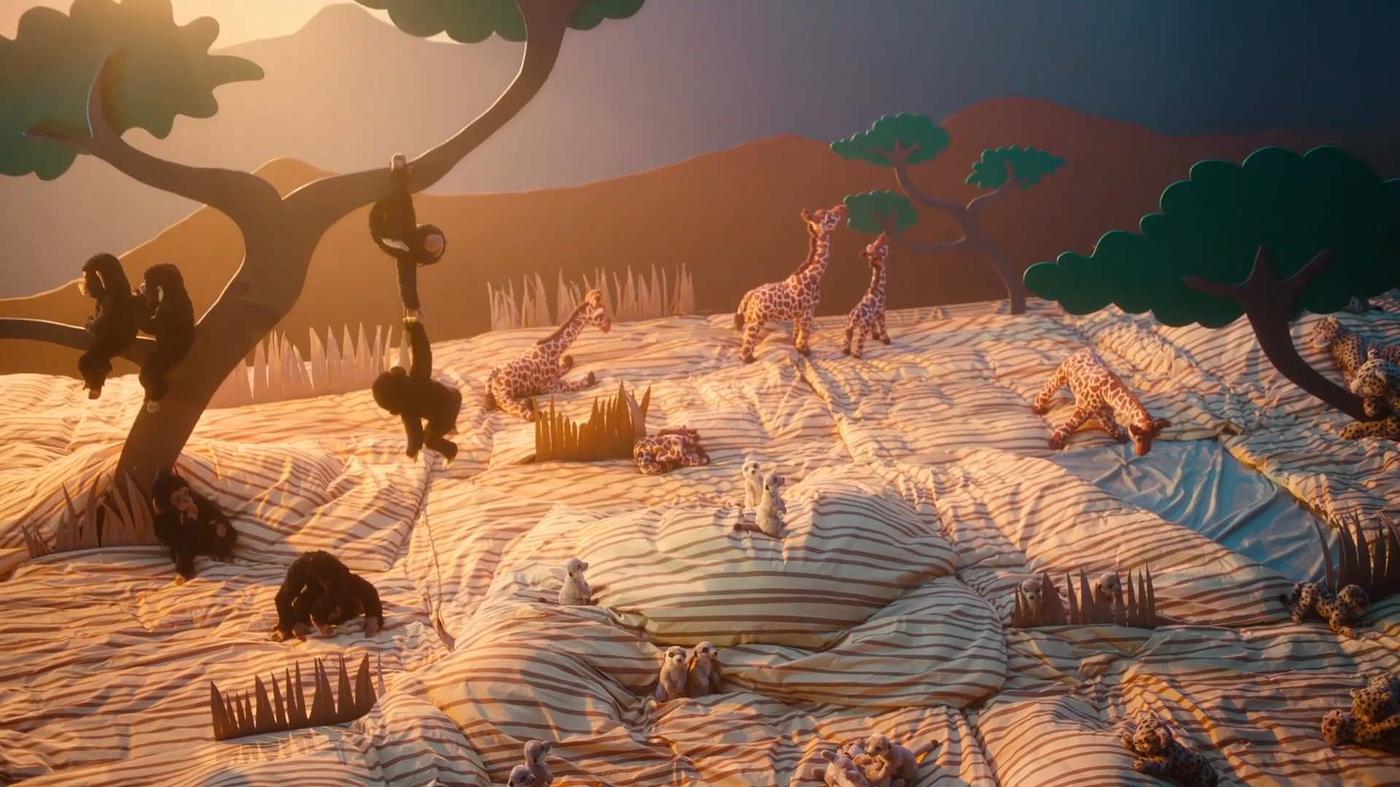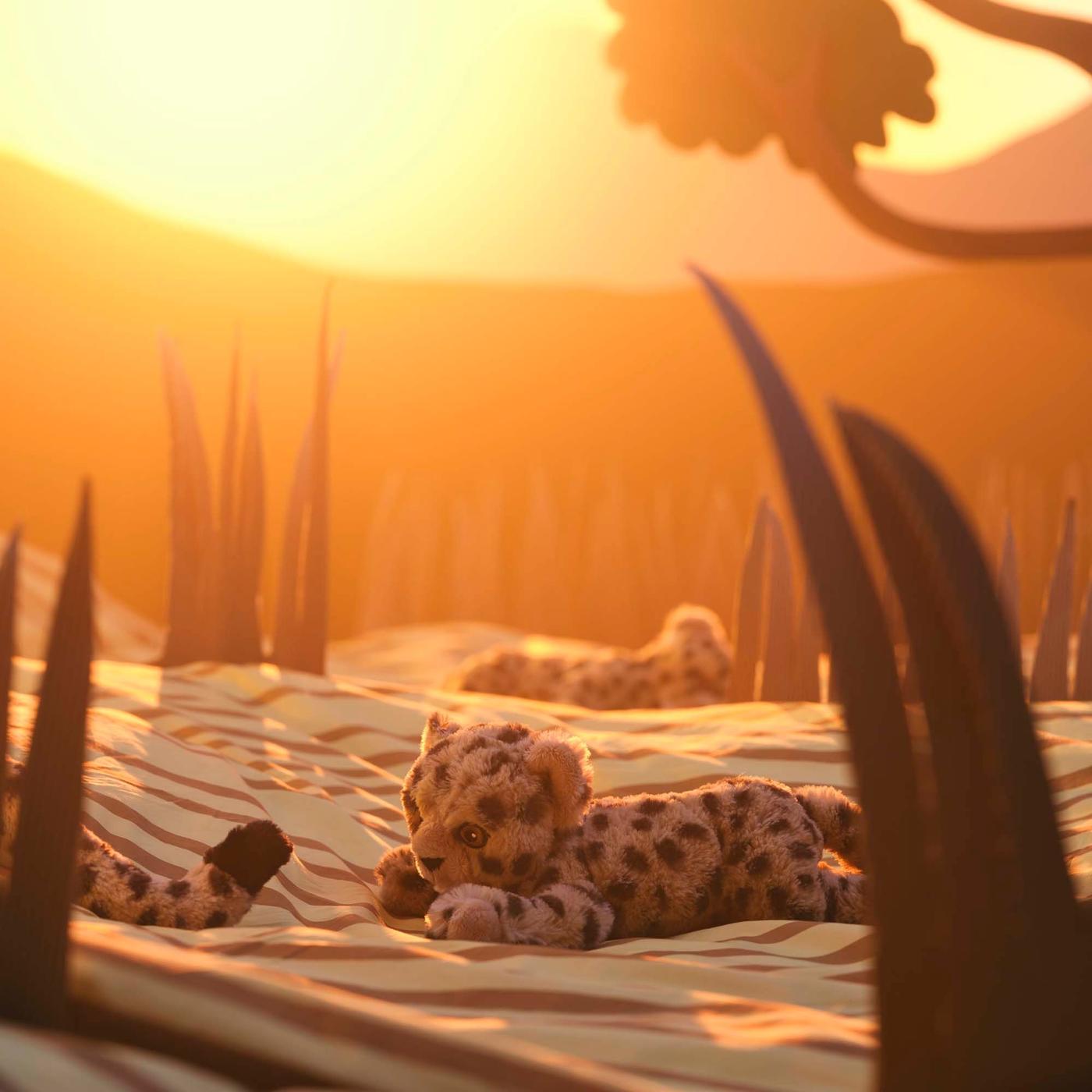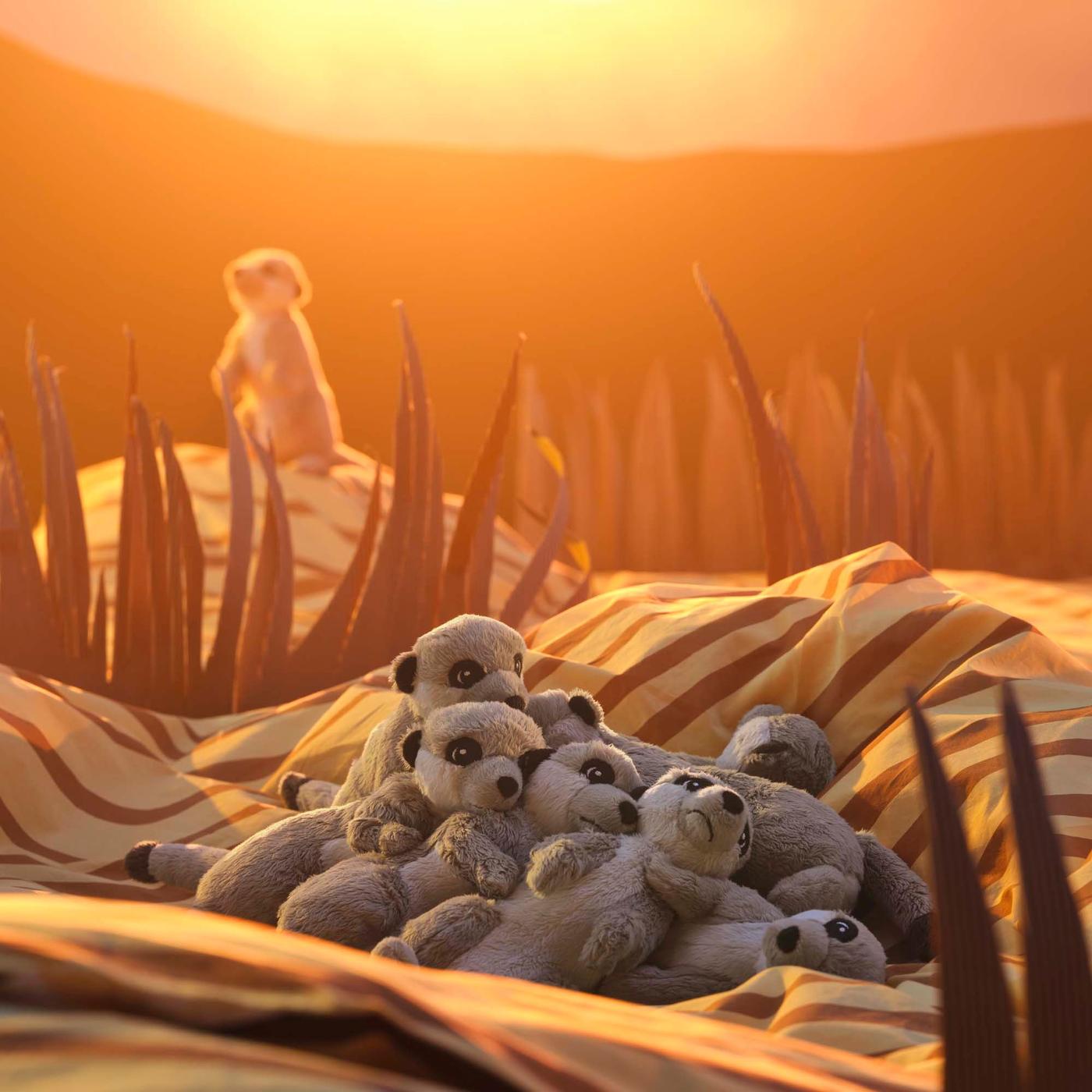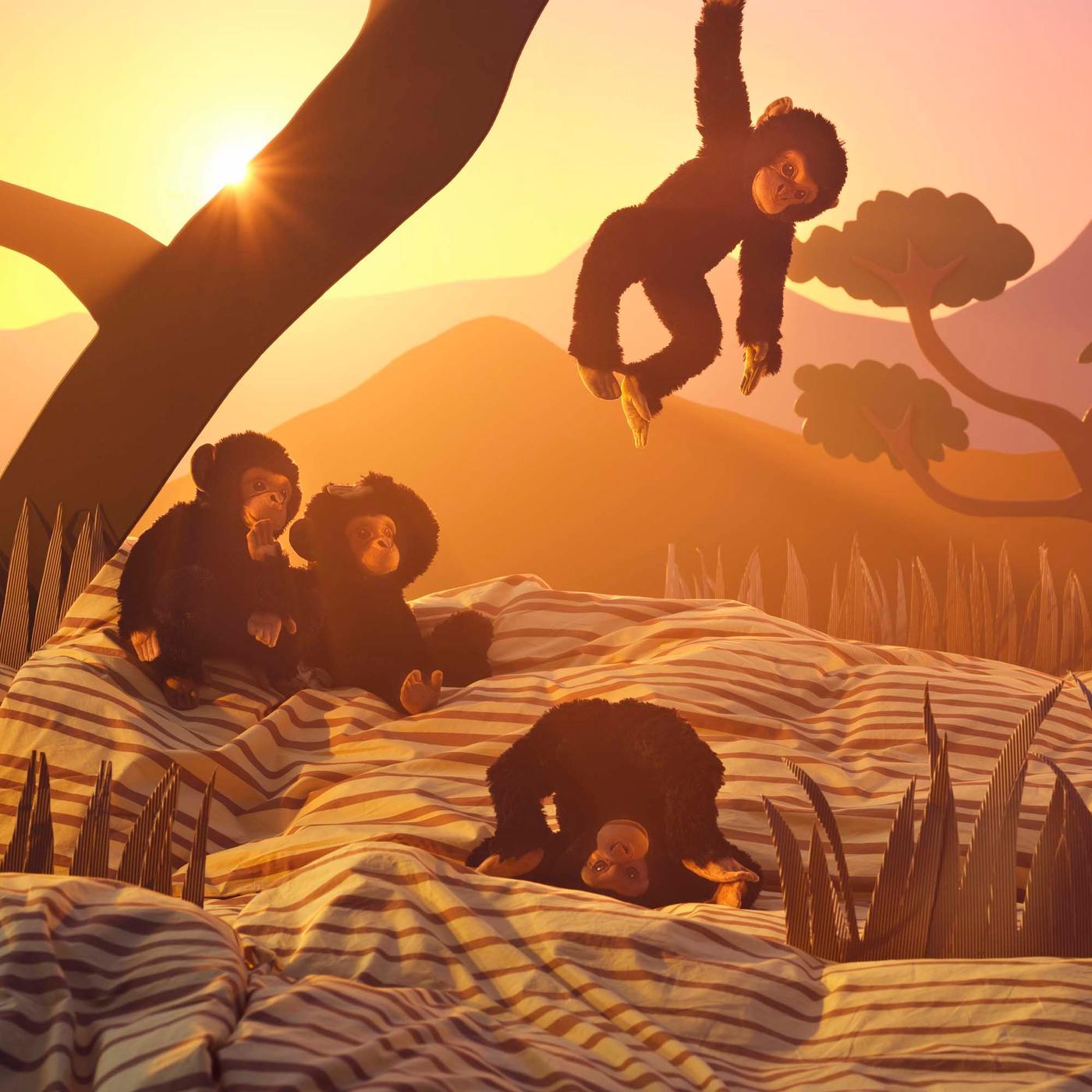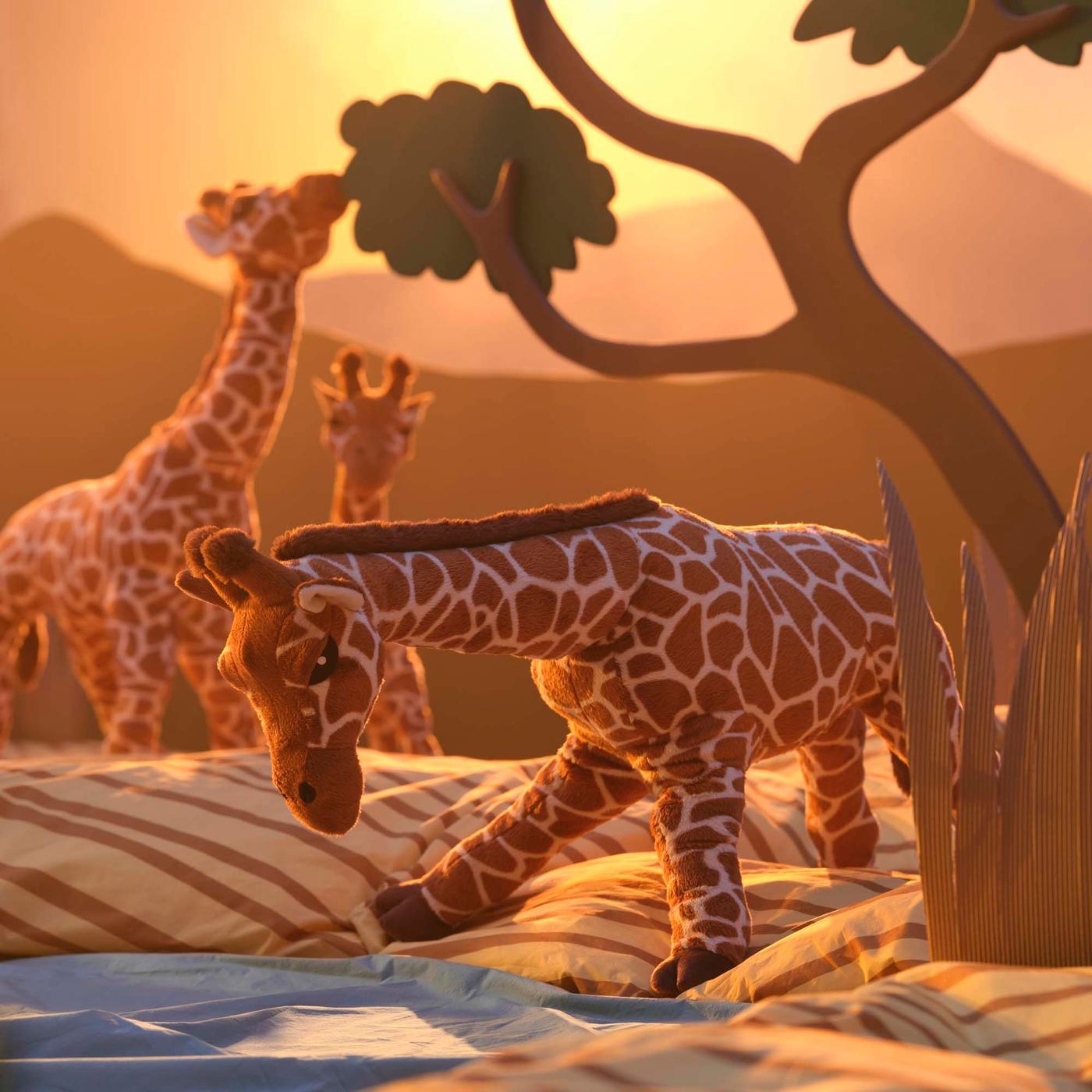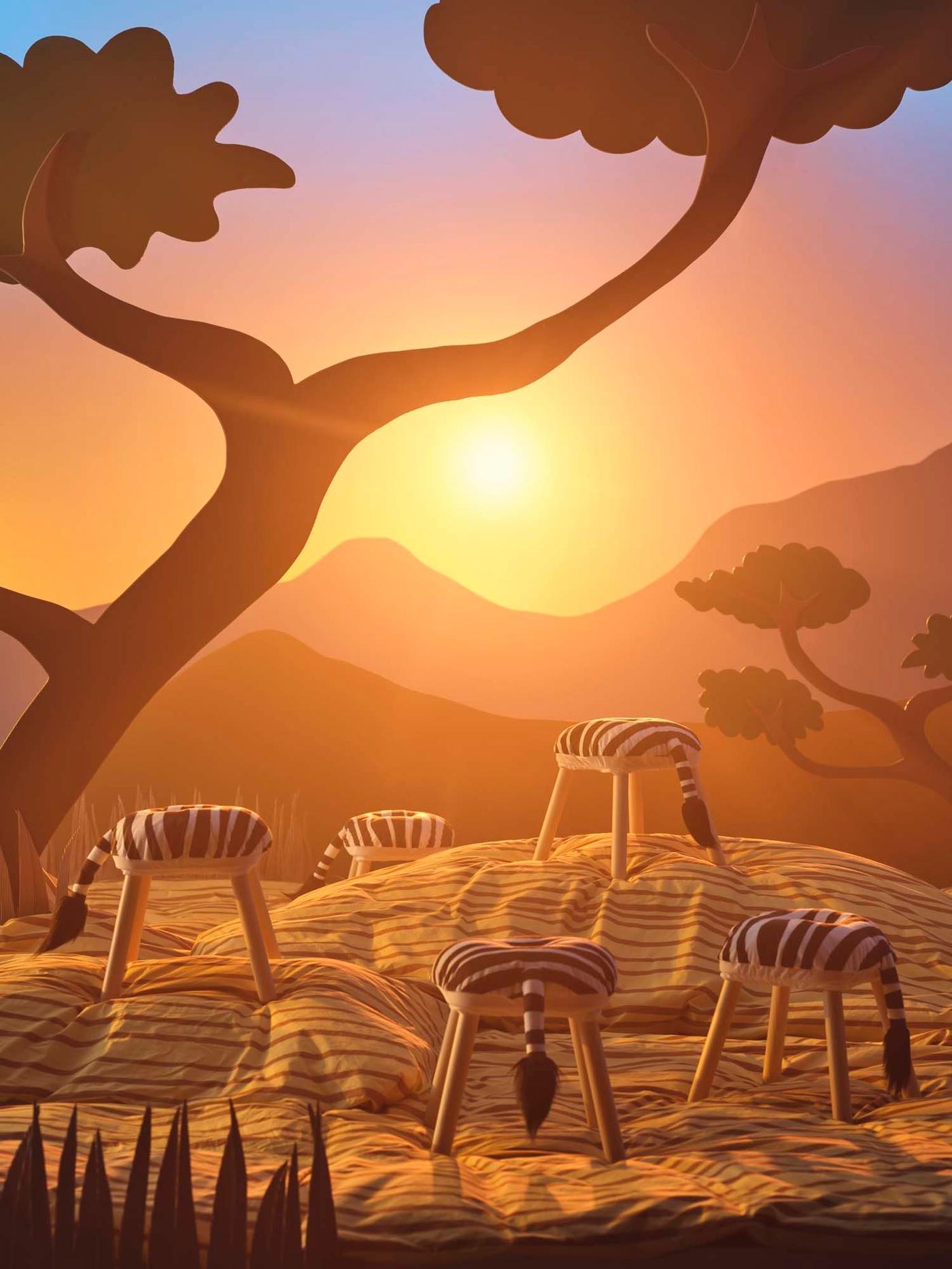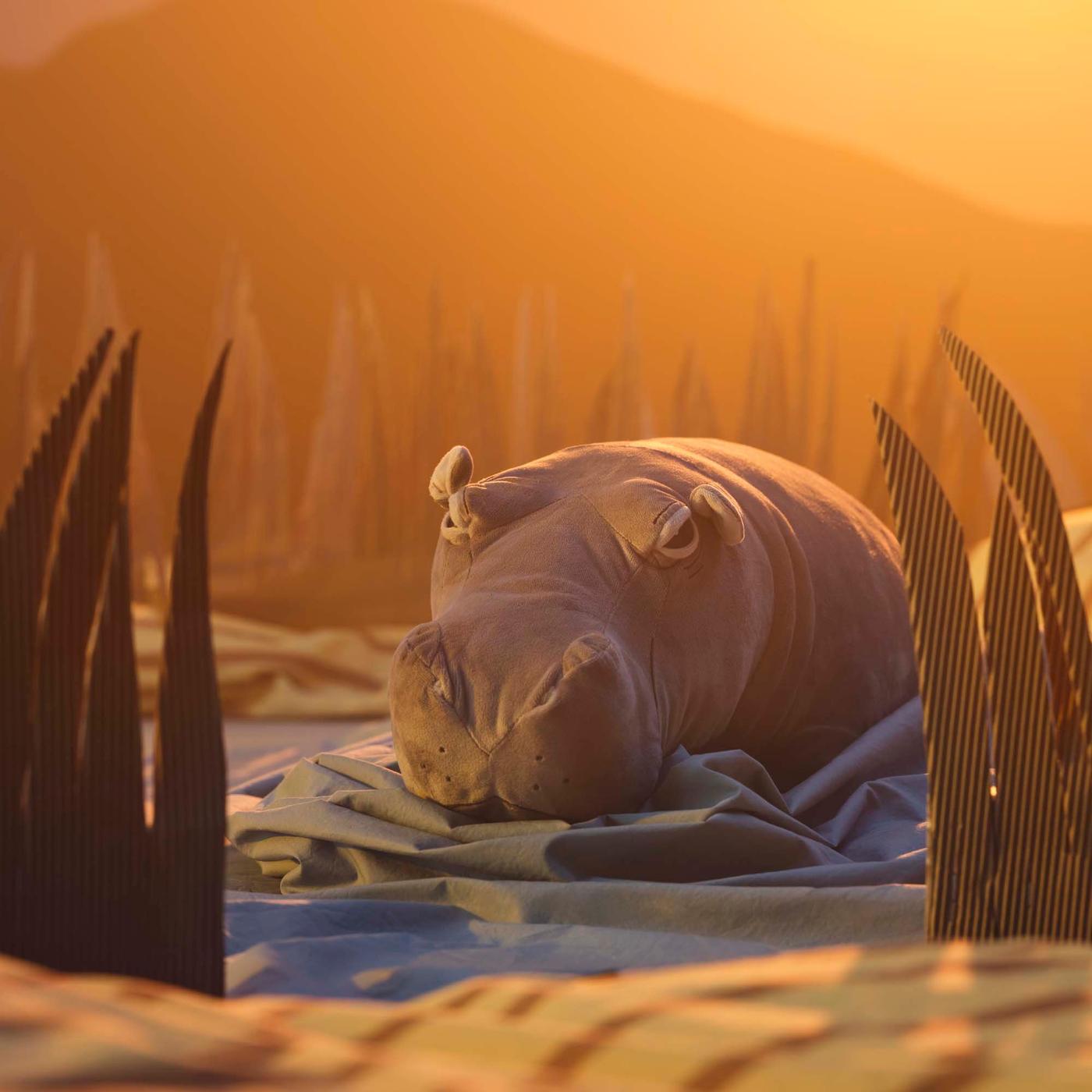SANDLÖPARE collection
Step into the adventures of the savannah
The animals in the new SANDLÖPARE collection are inspired by the wildlife of the African savannah. Would you like to see them in their natural habitat and take part in a fun quiz? Let the adventure begin!
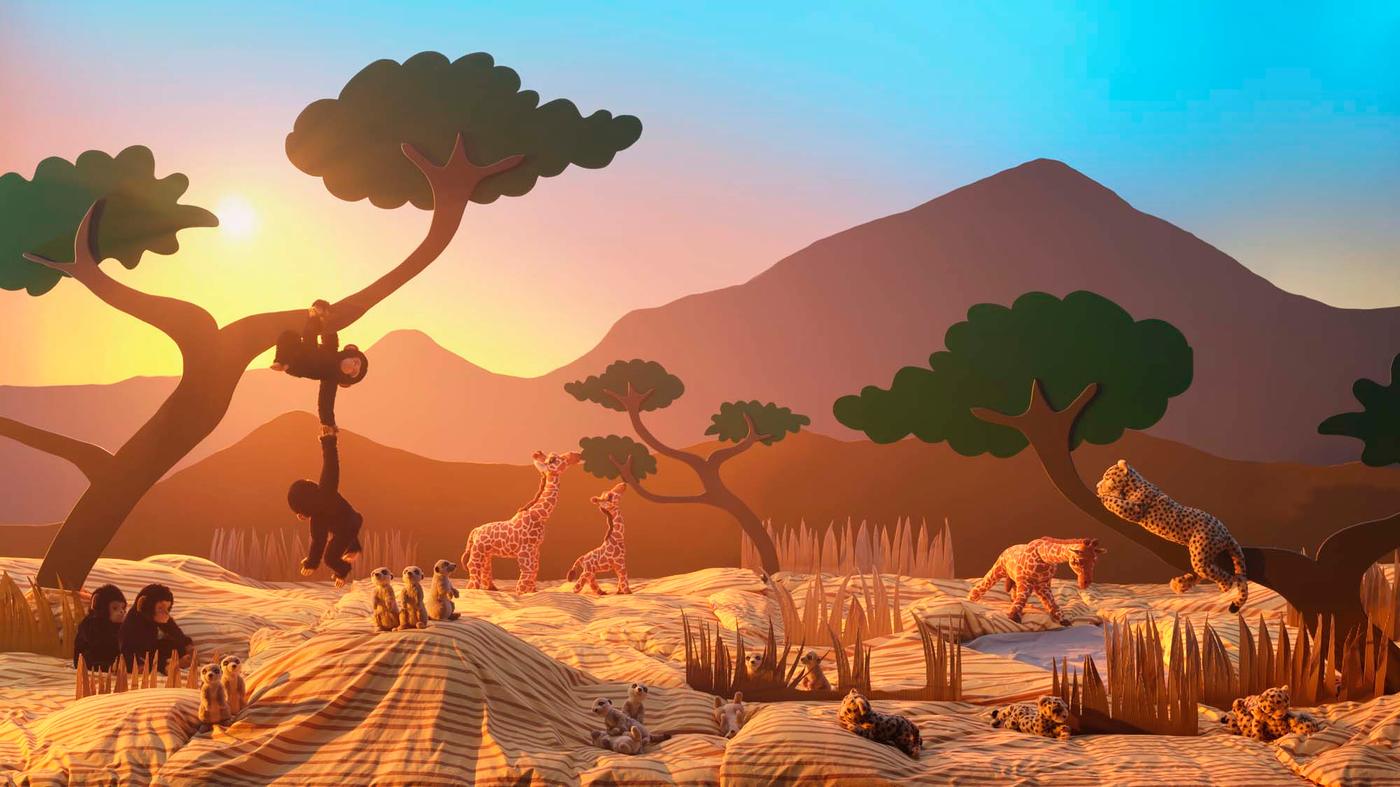
Can you spot the cheetah?
Quick! Look over there! It’s a cheetah, the fastest land-living animal in the world and sadly, Africa’s most endangered big cat. Did you know that unlike other big cats, they don’t roar? Instead they chirp, bark and purr to get the attention of their friends.
With their long, slim body, and claws like the spikes on running shoes, they can reach a speed of up to 110 km/h in just over three seconds. Now that’s speedy!
To practice hunting, cheetah cubs follow their mother’s tail to keep track of her in the long grass. Unlike in the savannah, this soft SANDLÖPARE cheetah doesn't need to practice hunting, and is happiest just hanging out.
With its curious eyes and cute pointy nose, the meerkat SANDLÖPARE soft toy is always ready to pop up for a little mischief or play.
Look who's popped up!
Pop! Pop! Pop! Who’s that poking up from the grass? It’s a gang of meerkats! They have greyish fur and dark patches under their eyes to reduce the sun's glare, making it easier to see in bright sunlight.
Meerkats live in cosy burrows under the ground with their big families, sometimes up to 50 of them! They share jobs: some go hunting for food, while others stand tall on their back legs, using their tails like tripods, to watch for danger. If they spot a predator, they call out to warn the rest.
And guess what? Meerkats don’t even need to drink water. They get it all from the tasty insects they eat, even scorpions.
Can you guess?
How do meerkats sleep?
Incorrect
Great try, but meerkats actually sleep on top of each other in a huge snuggly pile!
Who's hanging out there?
It's a troop of chimpanzees, but you can just call them chimps. They live high up in the trees and swing from branch to branch. Can you guess who’s the most intelligent animal in the world? Yep, it’s you! Chimps are number two, and they actually share 98% of the same genes as humans.
Just like us, they get emotional, give hugs, and even play cheeky pranks on their friends. They also spend lots of time picking fleas and dirt off each other’s fur. It’s not just about keeping clean, it’s their way of showing love and care, and it makes their friendships even stronger.
And here’s the coolest part: chimps have thumbs on their hands and on their feet – it’s almost like having four hands. Imagine that!
The SANDLÖPARE chimpanzee has touch and close fastening on its hands and feet, so it’s ready to swing through all of your family adventures with you.
Did you know that giraffes show affection by pressing their necks together? Just like them, the SANDLÖPARE soft toy giraffe loves a cuddle too.
Who's peeking over the trees?
Heads up! It’s the tallest animal on the planet, the giraffe! Even as babies they are about 182 cm tall, which is taller than most grown-ups. A grown male can reach a lofty six metres!
Giraffes have long necks and brown and yellow spots. They love munching tasty leaves high up in the trees. While they eat, they also help prune the trees and spread their seeds.
They really love food and eat for up to 20 hours a day. And they don’t need much sleep, just little naps of 5 to 30 minutes. That's a lot of munching.
Can you guess?
What colour is a giraffe's tongue?
Incorrect
Not quite. Giraffes have a 50 cm long black/blue tongue, which helps them munch up to 30 kg of leaves and twigs high up in the trees each day.
Spot the stripes
Hold up! It’s a herd of grazing zebras! Did you know their stripes are unique, just like your fingerprints – and that’s how they recognise each other?
They may look sweet and peaceful but they’re not afraid to stand up for themselves. If predators like lions, hyenas or leopards approach, they form a semi-circle to face the attacker and prepare to strike. And if a zebra is wounded, they circle around and attempt to protect them. A good friend indeed.
Just pop a SANDLÖPARE seat cover on your MAMMUT or FLISAT stool and ta-da… you'll turn it into a stripy zebra that's soft and comfy to sit on!
The soft SANDLÖPARE hippo can also handle a splash of water, but likes a big warm hug even more.
Did you see that splash?
Something is wading through the water. It’s a hippopotamus, or hippo! They might look cute, but most animals stay far away. Hippos have strong jaws that can open wide, and their teeth can grow up to 50 cm long! But don’t worry, they’re vegetarians and love munching on grass.
Fun fact: the word hippopotamus means “river horse” in ancient Greek, but hippos are much better at splashing than galloping. To stay cool, they spend most of the day in the water, with their eyes, ears and nose sticking up like snorkels. And here is a surprise: although they look slow and heavy, hippos can actually charge along the riverbed very quickly.
Can you guess?
How fast can a hippopotamus swim?
Incorrect
Trick question, sorry! While hippos can move fast in water by running on the riverbed, they can't actually swim. Surprising for an animal that spends most of its life in water, don’t you think?
Caring for wildlife
We’ve looked at just a few of the amazing animals of the African savannah. Every animal and plant there is important, as they all work together in a special ecosystem.
But the savannah is under threat – from hunting, climate change, and homes being lost to farming. Even though it’s far away, you can still help from home by protecting nature where you live, never dropping rubbish, and leaving space for wildflowers, birds, and insects.
You can also make a real difference by volunteering with groups that look after wildlife near where you live. And remember, wild animals have their own families and homes in nature, so we shouldn’t keep or feed them. That’s why we have cuddly soft toys to play with, love, and hug instead.
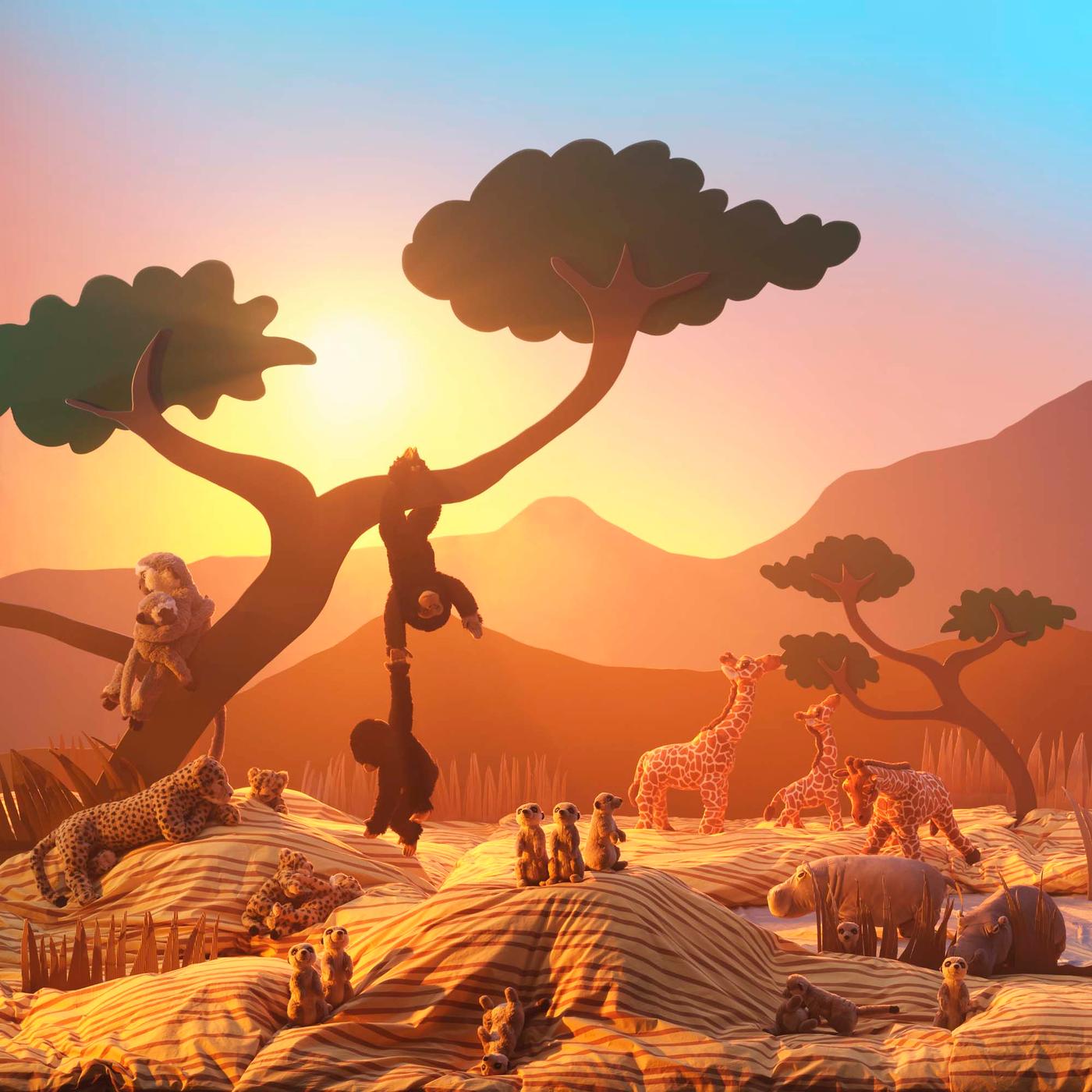
Can you guess?
How can you help these animals?
Incorrect
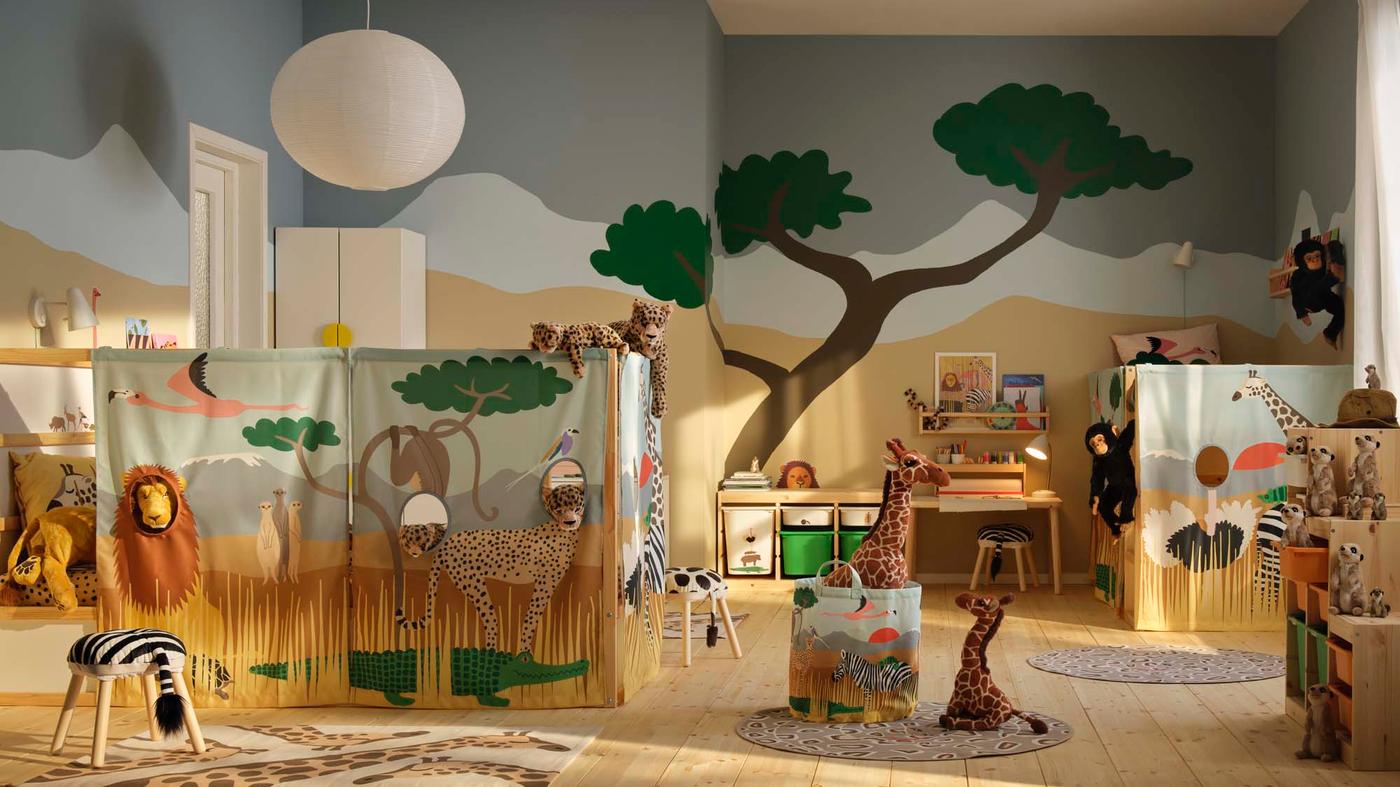
Who says the adventure has to end here?
The SANDLÖPARE collection is available in store and online. Some animals might be harder to spot where you are, but don’t worry – there are plenty of others waiting for a big cuddle!
